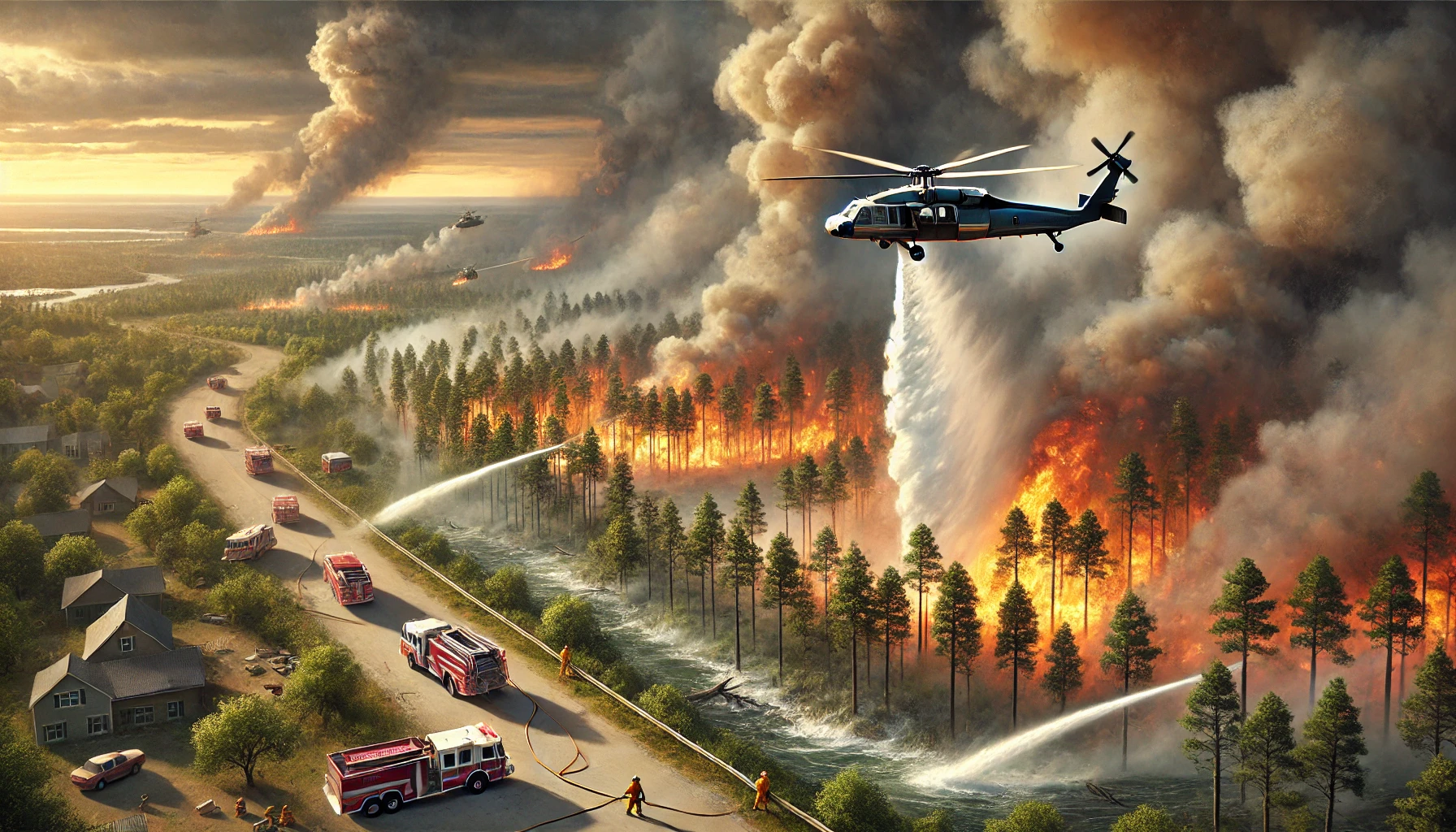Physical Address
304 North Cardinal St.
Dorchester Center, MA 02124
Physical Address
304 North Cardinal St.
Dorchester Center, MA 02124

The South Carolina wildfires of March 2025 have burned over 5,483 acres, with the Carolina Forest Fire near Myrtle Beach scorching 1,600 acres. Learn about containment efforts, evacuation updates, the statewide burning ban, and the firefighting response. Discover how these wildfires compare to the Los Angeles fires of January 2025 and what weather conditions mean for fire control.
As of March 3, 2025, South Carolina is battling widespread wildfires, with over 175 fires reported across the state, consuming a total of 5,483 acres. The most severe blaze, the Carolina Forest Fire near Myrtle Beach, has scorched over 1,600 acres and was 30% contained as of Monday morning. Driven by dry conditions, strong winds, and low humidity, these fires have triggered evacuations, particularly in Horry County, while also prompting a state of emergency declaration by Governor Henry McMaster on March 2.
Despite the rapid spread and severity of the fires, no injuries, fatalities, or structural damages have been reported. Firefighting teams, including 410 personnel and 128 fire apparatuses, are actively combating the blazes, assisted by aerial water drops from planes and helicopters. The cause of the fires remains under investigation, but meteorologists predict rainfall on March 4, which may aid containment efforts.
This article provides real-time updates, analysis of firefighting efforts, the impact on communities, and a comparison with the catastrophic Los Angeles wildfires from January 2025.
The wildfires have spread across multiple counties, with the Carolina Forest Fire near Myrtle Beach being the most destructive. Other affected areas include:
While South Carolina’s wildfires have been severe, they pale in comparison to the Los Angeles wildfires of January 2025, which burned over 45,000 acres, destroyed 18,000 structures, and resulted in 25 fatalities.
| Factor | South Carolina Wildfires (March 2025) | Los Angeles Wildfires (January 2025) |
|---|---|---|
| Total Acres Burned | 5,483 acres | 45,000+ acres |
| Most Affected Area | Myrtle Beach (Carolina Forest Fire) | LA County (Eaton & Palisades Fires) |
| Containment Timeline | 30%-85% contained in 2-3 days | Fires raged for over 3 weeks |
| Evacuations | Horry County (temporary) | 200,000+ residents displaced |
| Structures Destroyed | 0 reported | 18,000+ homes, buildings lost |
| Fatalities & Injuries | None reported | 25 deaths, hundreds injured |
| Cause of Fire | Under investigation | Severe drought, power line sparks |
| Estimated Economic Loss | Minimal | $20 billion+ in damages |
Conclusion: South Carolina’s wildfires, while significant, have been far less destructive than those in California due to faster containment, lower population density in fire zones, and more favorable weather conditions.
As of March 3, 2025, a total of 5,483 acres have burned across 175 wildfires statewide.
The Carolina Forest Fire near Myrtle Beach is the most severe, burning 1,600 acres in Horry County. Other fires are reported in Georgetown, Berkeley, and Williamsburg counties.
Evacuations were ordered in Horry County on March 2 but were lifted by Sunday evening as containment improved.
Unlike the Los Angeles wildfires in January 2025, which burned 45,000+ acres and destroyed 18,000 structures, South Carolina’s fires have caused no reported property damage or fatalities.
Officials estimate full containment by March 6-7, aided by incoming rain on March 4.
While South Carolina’s wildfires of March 2025 have been challenging, rapid containment efforts, favorable weather changes, and effective firefighting coordination have prevented them from escalating into a catastrophic event. Unlike the Los Angeles wildfires, which caused widespread destruction and fatalities, South Carolina’s fires have resulted in zero structural damage and no loss of life.
As fire crews continue containment efforts, the focus now shifts to long-term fire prevention, recovery, and ensuring that future outbreaks are mitigated through proactive measures.